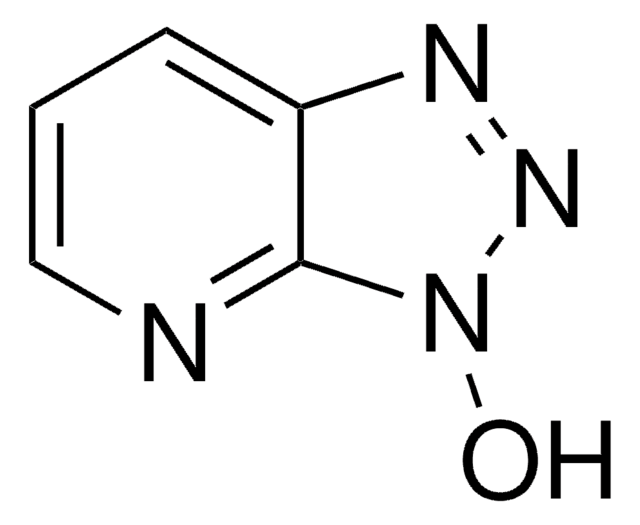Wichtige Dokumente
233412
Ethyl(hydroximino)cyanoacetat
97%, for peptide synthesis
Synonym(e):
Ethyl-cyan-(hydroxyimino)-acetat, Ethyl-hydroxyimino-cyanacetat, Ethylisonitrosocyanoacetat
About This Item
Empfohlene Produkte
product name
Ethyl(hydroximino)cyanoacetat, 97%
Qualitätsniveau
Assay
97%
Form
solid
mp (Schmelzpunkt)
130-132 °C (lit.)
Anwendung(en)
peptide synthesis
Funktionelle Gruppe
amine
ester
nitrile
oxime
SMILES String
CCOC(=O)C(=N\O)\C#N
InChI
1S/C5H6N2O3/c1-2-10-5(8)4(3-6)7-9/h9H,2H2,1H3/b7-4+
InChIKey
LCFXLZAXGXOXAP-QPJJXVBHSA-N
Suchen Sie nach ähnlichen Produkten? Aufrufen Leitfaden zum Produktvergleich
Allgemeine Beschreibung
Ethyl(hydroxyimino)cyanoacetat wird auch als Oxyma bezeichnet. Es handelt sich um eine hocheffiziente umweltfreundlichere Alternative für die Amid- und Peptidsynthese.
Anwendung
Lagerklassenschlüssel
11 - Combustible Solids
WGK
WGK 3
Flammpunkt (°F)
Not applicable
Flammpunkt (°C)
Not applicable
Persönliche Schutzausrüstung
Eyeshields, Gloves, type N95 (US)
Hier finden Sie alle aktuellen Versionen:
Besitzen Sie dieses Produkt bereits?
In der Dokumentenbibliothek finden Sie die Dokumentation zu den Produkten, die Sie kürzlich erworben haben.
Kunden haben sich ebenfalls angesehen
Artikel
COMU is a non-explosive coupling agent suitable for solution phase & solid phase peptide synthesis. Its activity meets or exceeds that of HATU and its water-soluble by-product are easily removed.
Unser Team von Wissenschaftlern verfügt über Erfahrung in allen Forschungsbereichen einschließlich Life Science, Materialwissenschaften, chemischer Synthese, Chromatographie, Analytik und vielen mehr..
Setzen Sie sich mit dem technischen Dienst in Verbindung.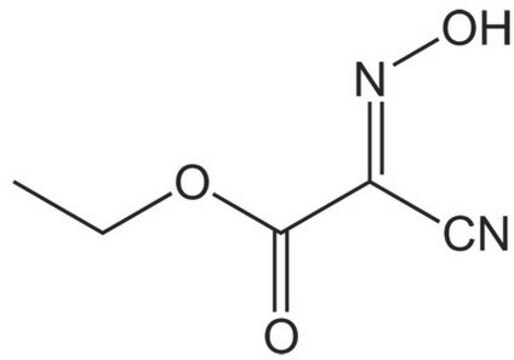


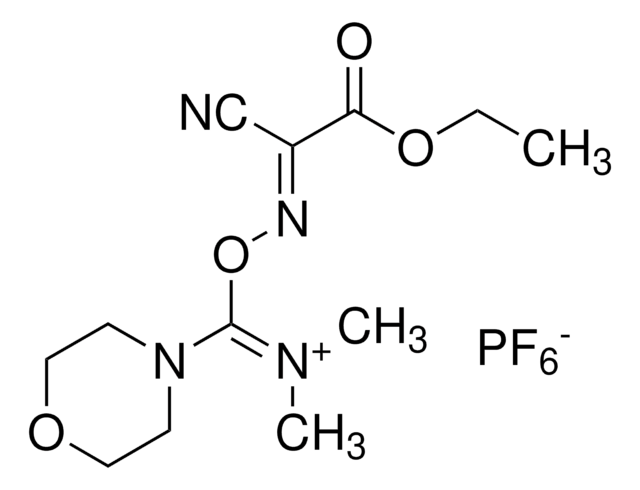

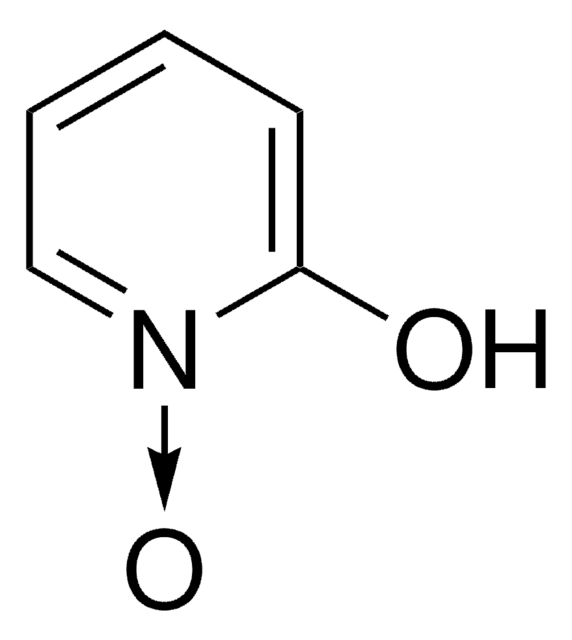



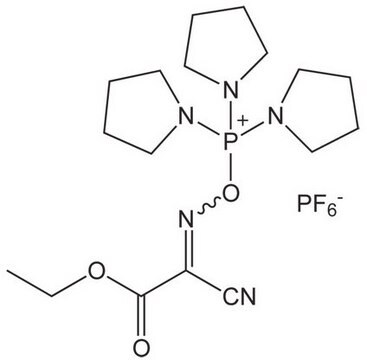
![O-[2-Oxo-1(2H)-pyridyl]-N,N,N′,N′-tetramethyluronium-tetrafluoroborat ≥99.0% (HPLC)](/deepweb/assets/sigmaaldrich/product/structures/100/378/69092a8f-fa9f-4c77-bc19-eac7790dbc1c/640/69092a8f-fa9f-4c77-bc19-eac7790dbc1c.png)
![COMU 1-[(1-(Cyano-2-ethoxy-2-oxoethylideneaminooxy) dimethylaminomorpholino)] uronium hexafluorophosphate Novabiochem®](/deepweb/assets/sigmaaldrich/product/images/237/337/13566c06-8931-4cc2-8621-c8742a392cd6/640/13566c06-8931-4cc2-8621-c8742a392cd6.jpg)

